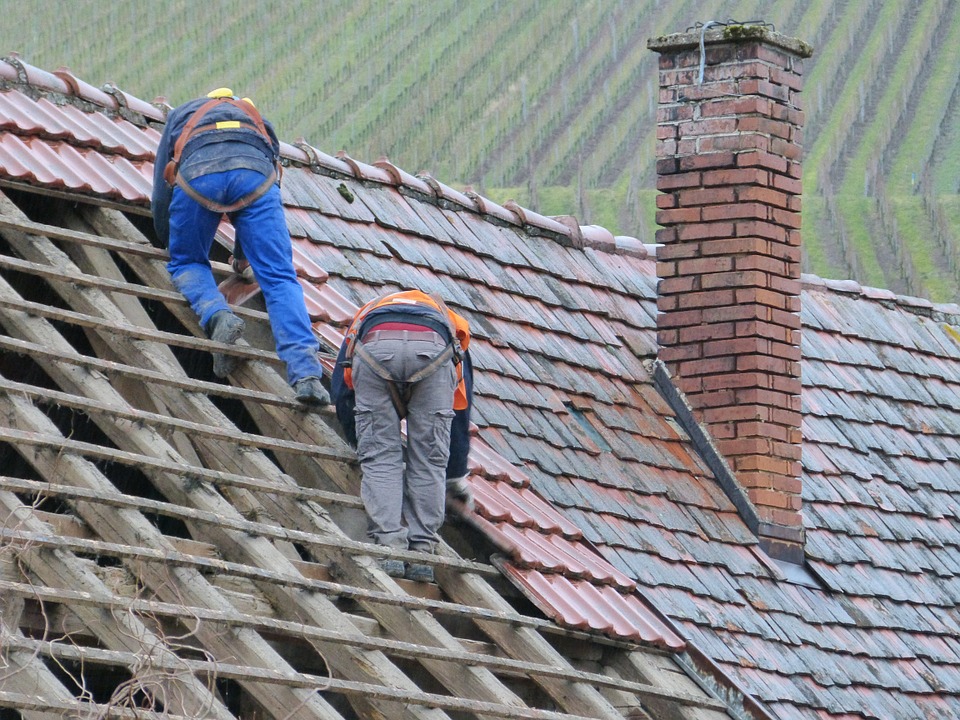Just How to Assess Different Roof Covering Options for Your Building Demands
Examining roofing choices for your structure needs an extensive strategy that considers numerous aspects such as the intended usage of the framework, local climate conditions, and product characteristics - Perrysburg Roofer. It is necessary to consider the advantages and drawbacks of various roof types, from asphalt tiles to metal and clay floor tiles, while likewise factoring in first prices and long-term upkeep.
Examining Your Structure's Needs
To properly examine roofing alternatives, start by completely evaluating your building's demands. Beginning by thinking about the structure's planned use, as different frameworks might demand varying roof covering specifications. Household roof coverings typically focus on appearances and insulation, while commercial buildings may focus on toughness and load-bearing capacity.
Next, review the regional climate conditions that will certainly influence roof covering performance. Factors such as temperature level variations, rainfall degrees, and wind patterns can affect material option and style. A roof system that excels in a temperate climate may not carry out too in locations vulnerable to heavy snowfall or severe heat.
Additionally, analyze the architectural stability of your structure. Ensure that the existing framework can support the chosen roof covering materials, particularly if thinking about much heavier options. It is likewise important to assess any regional building codes or regulations that may dictate specific needs for roof.

Contrasting Roof Covering Materials
When a thorough assessment of your building's needs has been finished, the next action entails contrasting different roof materials. Each product provides distinct benefits and disadvantages, making it crucial to straighten your option with your details demands and circumstances.
Asphalt tiles are widely identified for their price and convenience of setup, making them a preferred alternative for property buildings. On the various other hand, metal roofing, recognized for its sturdiness and longevity, can withstand extreme climate conditions yet may feature a higher preliminary financial investment.
Clay and concrete floor tiles supply outstanding thermal insulation and visual appeal, particularly for Mediterranean-style style, yet they call for an even more durable architectural support because of their weight. Timber shakes offer an all-natural appearance and great insulation homes but may demand more maintenance and are at risk to fire risks.
Assessing Price and Budget Plan
Examining your roofing options demands a mindful analysis of cost and budget plan considerations. The overall spending plan for a roof job comprises a number of aspects, including material expenses, labor expenditures, maintenance, and prospective lasting financial savings. It is important to develop a clear budget plan before discovering certain roof products, as this will certainly assist the decision-making process and aid you stay clear of overspending.
Begin by getting quotes from several specialists to comprehend labor costs in your area. Make certain that these estimates include all required services, such as removal of the old roof covering, installment, and any kind of added functions, like insulation or air flow enhancements - Perrysburg Roofer. Next, evaluate the price of various roof products, thinking about both preliminary setup costs and anticipated life-span

Comprehending Power Efficiency
Energy effectiveness plays an essential function in the choice of roof covering products and systems, significantly impacting both energy intake and overall comfort within a building. A well-chosen roofing can enhance thermal performance, decreasing the need for home heating and cooling systems, which consequently decreases power bills and lessens ecological impact.
When examining roof covering alternatives, consider materials that mirror rather than take in heat. Light-colored or reflective roof products can substantially reduce roofing system surface area temperature levels, bring about reduced power usage throughout warm months. In addition, proper insulation and ventilation are necessary to enhance the power efficiency of the whole roof. Insulation protects against heat transfer, while air flow minimizes warm accumulation in the Find Out More attic room room.
Another important factor is the roof's durability and maintenance needs. Sturdy materials that require less frequent replacement add to lasting power cost savings. The energy efficiency of right here a roof system can also be evaluated through its compliance with recognized sustainability rankings such as ENERGY STAR or LEED.
Taking Into Consideration Aesthetic Charm
A roofing's visual charm dramatically affects the general look of a structure, matching its architectural design and improving aesthetic appeal. Sylvania Roofing Contractor. When reviewing roof options, it is important to think about how the chosen material, color, and design will harmonize with the existing framework and neighborhood. A well-designed roof covering can raise even the easiest of structures, changing them into visual focal points
Different roof materials supply various visual qualities. As an example, typical roof shingles may stimulate a classic beauty, while steel roofing can give a modern, sleek appearance. Furthermore, the color of the roofing product plays a crucial function; lighter tones can make a building appear even more roomy, while darker tones might produce a cozier atmosphere.
Furthermore, architectural components, such as dormers and eaves, can enhance the roof's aesthetic effect. It is recommended to seek advice from expert designers or architects to make certain the chosen roof option straightens with the total design intent. Eventually, a roof covering needs to not just give useful advantages but additionally contribute positively to the building's visual, Discover More showing the owner's taste and the character of the surrounding environment.
Verdict

 Rider Strong Then & Now!
Rider Strong Then & Now! Charlie Korsmo Then & Now!
Charlie Korsmo Then & Now! Mike Vitar Then & Now!
Mike Vitar Then & Now! Suri Cruise Then & Now!
Suri Cruise Then & Now! Barbara Eden Then & Now!
Barbara Eden Then & Now!